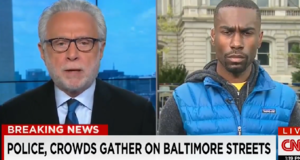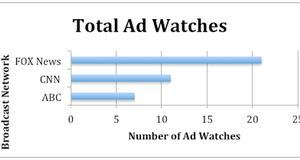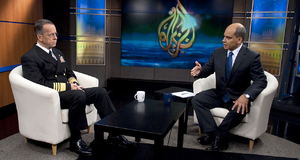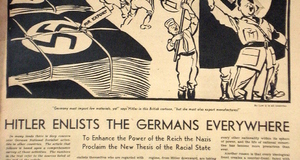From Elon Journal of Undergraduate Research in Communications VOL. 4 NO. 2Public Perceptions of Media Bias: A Meta-Analysis of American Media Outlets During the 2012 Presidential ElectionDiscerning Bias: Practical Models of Media BiasIn addition to their work analyzing the influence of partisan consumers on media coverage, Mullainathan and Shleifer (2005) were also able to determine two distinct styles, or forms, of measuring media bias. Proponents and believers of an inherent media bias also point to several practices or behaviors as proof of the media's partiality to liberal causes. The first method is referred to as the "gatekeeper" bias. This particular method of bias refers to the purposeful selection and aggrandizement of certain stories by American journalists to over-emphasize the relative importance or correctness of one side of the issue. This form of bias is especially relevant to the context of this study, as the proverbial "gatekeeper" (which in this context may either be a sole journalist or a representative of a larger institution) is directly regulating and manipulating the scope and flow of information into American society. The second pattern of behavior associated with biased reporting is known as "bias by placement." This pattern reflects the practice of journalists intentionally depicting news stories in either a prominent or negligible way so as to magnify or downplay the information; this pattern is often, but not always, attributed to the issue's coincidence with the journalist's personal political or social belief system. This pattern can often be observed through analysis of nightly broadcast rundowns or newspaper design mock-ups (D'Alessio & Allen, 2000). Due to the American public's notoriously short attention span in response to being presented new information, journalists are now expected to accommodate this behavior by relaying the most contextually relevant information to consumers by the most prominent and obvious means available to them. Traditionally, print stories that receive the biggest headlines and/or "above the fold," front page placement are perceived by readers as the most timely and appealing stories in the entire paper, thus garnering reader attention. Meanwhile, within the format of television broadcasts, produced segments and packages that are scheduled for the "A" or "B" blocks are typically placed there for the immediacy of their relevant facts and their simultaneous ability to drawn in (more) prospective viewers, as well as their ability to retain existing viewers (D'Alessio & Allen, 2000). This particular form of bias is directly linked to the third type of bias, known as "coverage" bias. In this context, coverage bias reflects the amount of calculable time or physical space each issue (as well as it's subsequent sides) is allotted. Similar to the prominence and relative weight that reporters purposefully or negligibly assign to each story, coverage bias is also meant to expose the ideological balance that should technically exist if the journalist is claiming to uphold the tenets of fair and neutral reporting. In other words, there should be an obvious, equal partisan representation of the various sides during an outlet's coverage of a specific issue (D'Alessio & Allen, 2000). The next two styles of biased reporting will be discussed in tandem with one another, given their interrelatedness. The forms in question are referred to as "statement" (or narrative) bias, and "bias by omission." These two practices entail journalists purposely interjecting their personal opinions or anecdotal knowledge about the legitimacy of objective facts (D'Alessio & Allen, 2000). The objective for the journalist in this case is to promote one ideological perspective (likely one that coincides with their own) whilst decrying the intellectual or factual foundations of another. In some cases, the journalist will intentionally conceal or ignore pertinent facts that may contradict or delegitimize the basis of their arguments (hence bias by omission). The final practice that can be commonly attributed to biased presentation or reporting is known as "bias by source selection" (D'Alessio & Allen, 2000). This practice aligns itself considerably with the aforementioned coverage and omission biases in that they reflect a journalists conscious efforts to curtail the presentation and public knowledge of relevant facts by choosing to obtain or feature information provided by sources who will either a) willingly espouse subjective comments that aligns with the journalist's ideological identity, or b) purposefully relay only facts that will reaffirm the journalist's (or network's) partisan-influenced depiction of a relevant news story. Each of the above manipulative patterns of partisan reporting is critical to furthering our understanding of the arguments legitimizing the existence of a palpable liberal bias by American media outlets. However, while there are plenty of documented examples of biased reporting throughout the entire expanse of American news media, there simultaneously exists a number of relevant counter-arguments that attempt to contextualize the myth of a liberal reporting bias within the realm of journalist's (in this case, excusable) incapacity to consistently emulate objectivity in the eyes of an increasingly polarized, partisan consumer base. Arguments Against the Liberal Media BiasOne of the most devastating elements to the foundational argument of the existence of a perceptible bias by the news media is that many journalists actively seek to avoid implicit displays of partisanship or non-objectivity in their work. It can be argued that since it is near impossible to maintain complete and total objectivity at all times, journalists across the spectrum actively strive to uphold more realistic and attainable standards of conduct within the context of their jobs, such as "fairness" and "neutrality." Instead, a journalist attempts to be objective by two methods: 1) fairness to those concerned with the news, and 2) a professional process of information gathering that seeks fairness, completeness, and accuracy. In an excerpt from "21st Century Communication: A Reference Handbook," Andrew Cline explains his theory that journalists are (by their human nature and intellectual basis) predisposed to be unable to remain completely neutral in their reporting. "No matter how much we may try to ignore it, human communication always takes place in a context, through a medium, and among individuals" (Cline, 2008). Cline asserts that journalists exist on a similar plane with elected officials in which they are, by the nature of their industry, expected to vocally espouse political positions, but not as overtly. The Society of Professional Journalists harnesses journalists with its code of ethics, but they are not always as pristine as they claim to be. Cline postulates that journalists attempt to compensate for said inability to forego partisan leanings by employing two methods to reflect objectivity: fairness concerned with the news, and a professional process of information gathering focusing on fairness and accuracy (Cline, 2008). "Language is associated with a conceptual system. To use the language of a moral or political conceptual system is to use and to reinforce that conceptual system." He further argues, "We share the same English language, we often do not share dialects of the denotations and connotations of concepts, lived experiences, and ideologies" (Cline, 2008). These conscious efforts to emulate standards that reflect inclusivity and balance in reporting, by their very nature, directly contradict the very standards by which bias can logically be determined. If we are willing to accept Williams' (1975) pre-requisites of definitive bias as an acceptable measuring tool for evaluating partisanship in this context, it must be noted that in order for a pattern of behavior or statement to be considered inherently biased, it must reflect an intentional disruption or challenge of pre-existing social customs or beliefs. If a given media outlet is already actively seeking to avoid conflict by over-compensating and consciously curtailing their coverage to uphold their responsibility to objective reporting, it can be logically inferred that any remaining discrepancies between the format and presentation of coverage and the public's perception of its neutrality are accidental by nature and therefore not intentional. The researcher, throughout the course of this study, will endeavor to address the following research questions:
III. MethodologyThe author's research has expanded upon the initial assertions proffered by Mullainathan and Shleifer to include six specific manifestations or patterns indicating bias within outlet-presented information. Within the context of this study, the most logical approach to understanding public perceptions of media bias would be to thoroughly review and analyze the outlets being perceived as such. If American citizens believe the media to be inherently biased, the operative question is: Is there a means of proving that the mainstream media are in fact biased in favor of a particular candidate, political party or ideology? Using this rhetorical inquiry as a guideline, this meta-study sought to gather a variety of quantitative secondary research relating to public opinion polls regarding overall public sentiment toward media-related institutions. This study analyzed a number of informative and aesthetically discernible info-graphics, each of which depicts a multi-tried evaluation system for analyzing major media outlet coverage of issues relevant to the 2012 presidential election. Each of the depicted graphics represents a small portion of a much larger, comprehensive meta-analysis conducted by 4thestate.net, a liberal media watchdog consortium, which processed a total of 717 articles and 15,357 quotes collected from news stories, broadcast and radio transcripts between the period of May 1 and July 15, 2012. Furthermore, each graphic provides considerable insight into a specific statistical or cognitive aspect relating to the mainstream media's coverage patterns of the election. Drawing any definitive conclusions in a scholastic field of study like media bias is difficult when existing research suggests it to be a largely subjective issue. In an effort to correctly and concisely analyze this enormous field of study, the author has attempted to curtail the amount of reliance on subjective-related findings to help support the conclusions offered in this paper. Rather, the author of this meta-analysis will attempt to legitimize his argument by utilizing objective, numerical data to test the original hypotheses.Continued on Next Page » Suggested Reading from Inquiries Journal
Inquiries Journal provides undergraduate and graduate students around the world a platform for the wide dissemination of academic work over a range of core disciplines. Representing the work of students from hundreds of institutions around the globe, Inquiries Journal's large database of academic articles is completely free. Learn more | Blog | Submit Latest in Business & Communications |



















